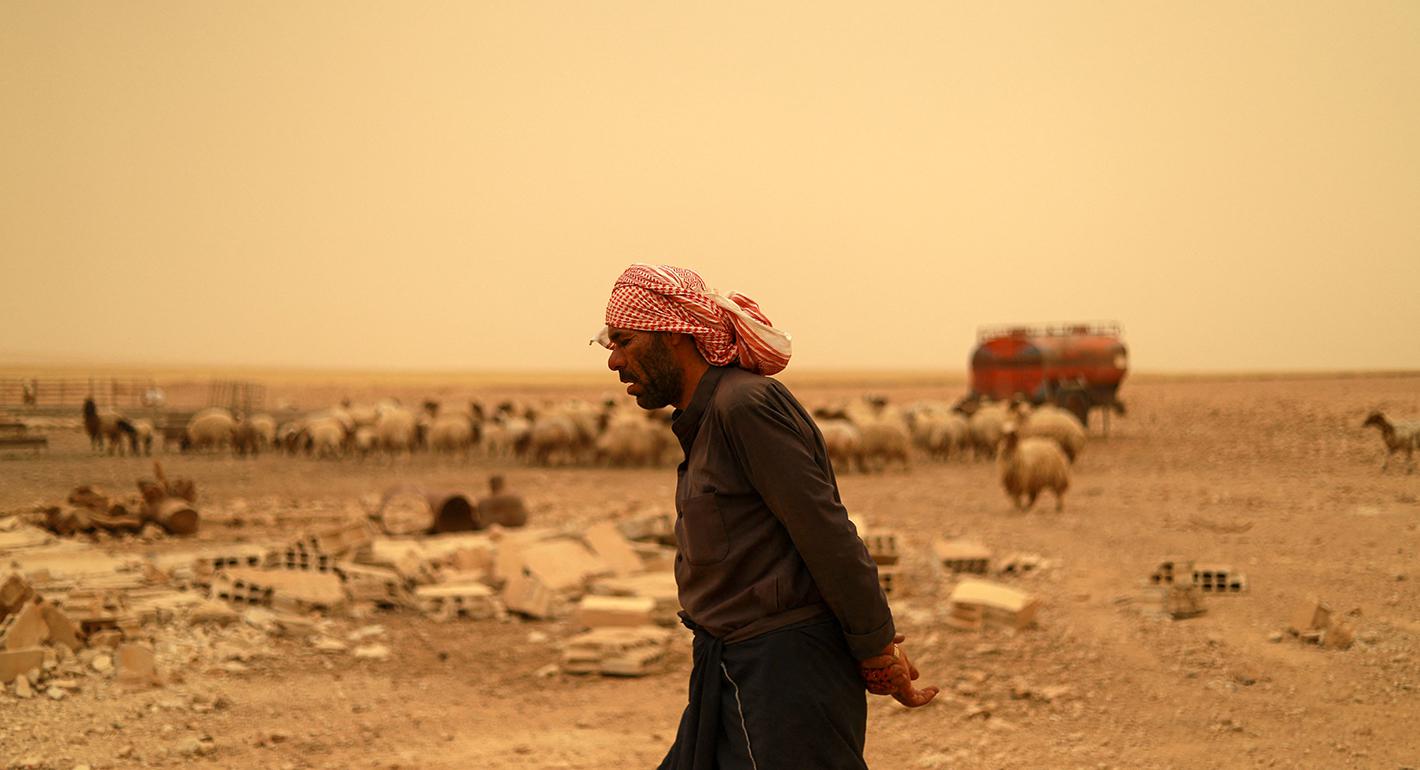Syria has suffered three droughts since 1980, the most severe of which was between 2006 and 2010, according to a study carried out by the Dutch peace organization, PAX. Again, in the summer of 2021, Syria witnessed record low levels of precipitation and a sharp decline in the flow of water into the Euphrates. This affected livestock breeding, as there was no growth in vegetation in the spring and summer of 2021, which meant that hundreds of thousands of sheep, cows, goats, and camels lacked pastures and access to water sources.
The study carried out by PAX notes that “pastoral communities in Syria are increasingly struggling with the impact of climate change, low livestock prices, and volatile weather conditions that further affect livestock prices, pushing these communities to the brink of poverty.”
Burdensome Costs
Shepherds Mohammad Khalaf Al Muhair and Ali Al Sawadi from the countryside of al-Hasakah governorate in northeastern Syria spoke in detail during an interview with Sada during the preparation of a documentary film about climate change. The two discussed the Syrian drought crisis and its varied impacts on livestock, especially with regard to the provision of feed, water, and medicine for cattle.
According to the pair of shepherds, one head of cattle needs three kilograms of feed per day, the price of which is one dollar, and ten heads of cattle drink water with an estimated cost of 10 dollars each month. In addition, one medicine box is only sufficient for 10 heads of cattle, and its price is 8 dollars. Of course, these prices are not fixed and escalate dramatically as demand increases. Regardless, these are very large numbers for shepherds and farmers in a country that suffers from a severe economic crisis. Indeed, the United Nations classifies 90 percent of the Syrian population as living below the poverty line.
Support Needed
The two men voice the complaint of their fellow shepherds about the loss of support from the government entities responsible for livestock, and they demand the provision of adequate feed and water, as well as controls on the drug prices set by veterinary clinics and pharmacies. That is because the diseases that spread during times of drought are devastating for their herds.
They further highlighted that the droughts also mean the end of natural grazing, which deprives the livestock of key vitamins and acquired immunity and makes them vulnerable to various types of fever, in addition to conditions such as salt deficiency, liver worms, and scabies.
Solutions Are Not Local
The Syrian Minister of Agriculture and Agrarian Reform, Mohammad Hassan Qatana, said in a television interview that confronting climate change is possible—not at the local level, but rather at the regional level. He explains that there should be joint projects with Jordan, Lebanon, and Iraq, with the need for these programs to be adopted by international organizations concerned with climate change.
According to Minister Qatana, climate change knows no borders because it has caused a significant decline in vegetation cover in deserts and forests, which greatly affects livestock by depriving them of pastures and water sources. In any case, it is certain that action is needed. At the recent United Nations climate summit, which was held in the Egyptian city of Sharm el-Sheikh last November, Secretary-General Antonio Guterres warned that the world was living in “climate chaos” and heading towards “climate hell.”
Taim Al-Haj is an investigative journalist and the author of in-depth reports on Syrian affairs. Follow him on Twitter: @taim_alhajj.






